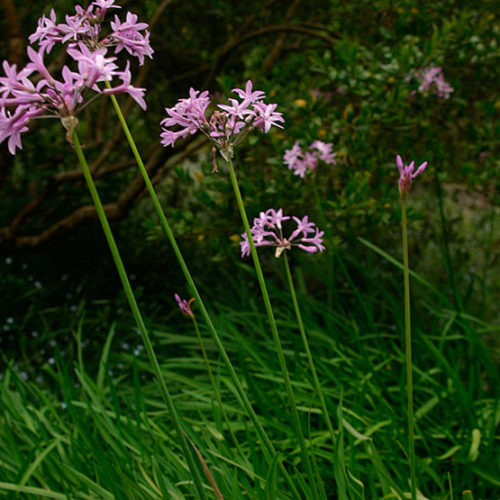Understanding the Art of Agapanthus Treatment: Important Steps for Healthy Development and Dynamic Blooms
In the realm of cultivation, the farming of agapanthus stands as a gratifying undertaking for those who seek to nurture these stylish blooming plants. From selecting the right selection to mastering pruning strategies, the trip in the direction of cultivating growing agapanthus plants is diverse and holds the vital to unlocking the complete potential of these botanical gems.

Picking the Right Agapanthus Range

When selecting the ideal Agapanthus range for your yard, take into consideration factors such as climate suitability, bloom color, and development behavior. Additionally, take into consideration the environment in your area to make certain the Agapanthus range you select can prosper in your certain conditions. Recognizing the development practice of different Agapanthus varieties is critical for correct positioning within your garden.
Perfect Planting Problems
Thinking about the ideal environmental demands is crucial for successful Agapanthus growing. Agapanthus plants are sensitive to cool temperature levels and need to be shielded from frost throughout winter season months.
To guarantee healthy and balanced development and vibrant flowers, plant Agapanthus bulbs at a depth of about 2-4 inches and space them 8-12 inches apart. Including raw material, such as compost, to the soil can enhance water drainage and fertility, promoting robust root growth. Mulching around the base of the plants helps retain moisture and suppresses weed growth. Regular watering is crucial, specifically during the growing season, to maintain the soil constantly moist yet not saturated.
Watering and Fertilizing Tips
Keeping proper dampness levels and giving crucial nutrients are crucial elements in the treatment routine for Agapanthus plants. It is crucial to strike an equilibrium when it comes to sprinkling Agapanthus. If overwatered, these plants choose consistently wet soil but are at risk to root rot. Throughout the growing season, water deeply as soon as a week, ensuring the dirt is well-draining to protect against waterlogging. In hotter environments or throughout periods of drought, more constant watering might be necessary to keep the soil equally moist. However, decrease watering in the winter season to stop water logged conditions.
Feeding Agapanthus is vital for advertising healthy development and prolific flowers. Apply a balanced plant food, such as a 10-10-10 formula, in the very early spring as brand-new growth arises. Repeat this application every 6-8 weeks throughout the growing season. Avoid too much fertilization, as it can lead to rich vegetation at the expense of blossoms. Always follow the supplier's directions for appropriate dilution and application approaches. By following these watering and feeding suggestions, you can ensure your Agapanthus plants flourish and generate vibrant, durable blooms.
Trimming Strategies for Agapanthus
Pruning Agapanthus plants at the proper times and with proper methods is critical for preserving their health and promoting optimal development and blooming. The perfect time to prune Agapanthus remains in late wintertime or very early spring prior to brand-new development arises. Beginning by removing any type of yellowing or dead leaves near the base of the plant. Cut them as short as possible without harming the emerging shoots.
Deadheading invested blossoms additional reading can likewise redirect the plant's energy into generating more flowers rather than setting seeds. If you desire to gather seeds for propagation, leave some flowers to fully grown and completely dry on the plant.
Bear in mind to make use of clean, sharp devices to make exact cuts and lower the threat of presenting illness. Agapanthus. Regular trimming will assist keep your Agapanthus looking healthy and balanced and neat while ensuring an abundant display of beautiful blossoms
Taking Care Of Common Bugs and Diseases
After guaranteeing correct pruning strategies her response for Agapanthus, it is essential to address common parasites and illness that can influence the wellness and vigor of these plants. One typical parasite that impacts Agapanthus is the Agapanthus gall midge.
An additional common concern is fungal leaf area, which offers as dark lesions on the leaves. To stop fungal conditions, guarantee great air blood circulation around the plants, stay clear of overhead watering, and eliminate any type of infected fallen leaves without delay. In addition, Agapanthus plants can struggle with root rot if they are grown in inadequately draining soil. To stop this, plant Agapanthus in well-draining soil and prevent overwatering. By being alert and taking prompt action against bugs and conditions, you can aid your Agapanthus plants prosper and generate vivid blossoms.

Verdict
To conclude, grasping the art of agapanthus care involves choosing the appropriate selection, giving optimal growing problems, proper watering and fertilizing, proper trimming techniques, and resolving common bugs and conditions. By complying with these crucial actions, you can make certain healthy and balanced development and dynamic flowers for your agapanthus plants. Bear in mind to routinely monitor and keep your plants to promote their overall health and durability.
To guarantee healthy and balanced growth and dynamic blooms, plant Agapanthus bulbs at a deepness of regarding 2-4 inches and room them 8-12 inches apart. By adhering to these check it out watering and fertilizing ideas, you can ensure your Agapanthus plants flourish and generate lively, long-lasting flowers.
One usual parasite that affects Agapanthus is the Agapanthus gall midget. Furthermore, Agapanthus plants can endure from root rot if they are planted in badly draining dirt. By adhering to these necessary steps, you can ensure healthy and balanced growth and vivid flowers for your agapanthus plants.